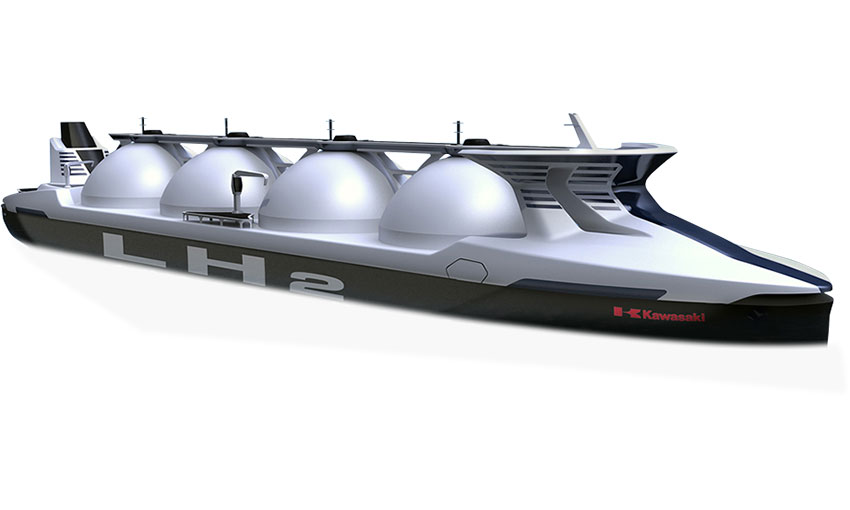THE PORT of Townsville and Origin Energy have signed a memorandum of understanding to collaborate on a liquid hydrogen project.
The MOU covers a potential expansion of the port, as well as the development of a liquefaction facility, a new berth and associated infrastructure. First export from the project is targeted from the mid-2020s.
Origin is collaborating with Japan’s Kawasaki Heavy Industries (KHI) on a 300MW early export project that would produce 36,500 tonnes per year of green liquid hydrogen using renewable energy and sustainable water.
The three parties will now focus on work required to accommodate KHI’s semi-commercial scale liquid hydrogen carriers, currently under development, future project expansion opportunities, and potential for sharing of common infrastructure with other Port of Townsville users.
Queensland Premier Annastacia Palaszczuk said: “The MOU signed today highlights north Queensland’s importance as a vital link in the supply chain needed for Queensland to become a major renewable hydrogen producer and supplier.
“We’ve invested in a $232 million upgrade of the port channel, $40 million Berth 4 upgrade and $48 million intermodal facility to ensure the port remains a premier gateway for the north.”
World-class location
Port of Townsville Chair Renita Garard said Townsville was a world-class location for renewable hydrogen production with significant export potential to close Asian markets.
“This is an extremely exciting project to be part of as the global demand for hydrogen is gaining momentum every day,” she said.
“Townsville enjoys more than 320 days of sunshine and the region has several established renewable energy developments with the renewable energy potential and regional partners progressing new hydrogen technology every day.”
Origin general manager future fuels Felicity Underhill said Townsville is ideally placed to develop a liquid hydrogen facility.
“Townsville has the potential to become a leading global hub for hydrogen exports, boosting local jobs, as well as supporting local industry and transport to decarbonise,” Ms Underhill said.
“There will be significant export demand for green hydrogen coming from Asia in the 2030s and even sooner from Japan in the mid-2020s and our proximity to these markets and abundance of clean renewable resources puts Australia in pole position to be a global leader in hydrogen.”
Ms Underhill said the Townsville project is one of the most advanced commercial-scale green liquid hydrogen projects in the world.
“We and our partners are looking forward to commencing front-end engineering and design this calendar year,” she said.
“Origin’s MOU with the Port of Townsville is an important and exciting next step in the process.”
Proven track record
Queensland government hydrogen champion and Mundingburra MP Les Walker said north Queensland has a proven track record for building infrastructure needed to support major industries.
“Part of the reason Townsville’s was established was its capacity as a major port and supplier of the services needed for the north’s agricultural and resources industries,” he said.
“Fast forward to today and this is a region that has the local skills, construction know-how and scientific expertise to put Queensland on the world map for hydrogen.”
Transport minister and acting minister for energy, renewables and hydrogen Mark Bailey said today’s milestone demonstrated the critical role Queensland’s publicly owned ports are playing in the state becoming an international hub for hydrogen industry and jobs.
“Our state already has a strong international reputation. We’re a leading energy exporter and the world is now looking to Queensland as a leading producer of hydrogen as the next energy source,” Mr Bailey said.
“The Port of Townsville is already well positioned as a major goods hub of the North and upgrades will have it ready for additional future capacity. These investments in the port combined with adjacent land in the State Development Area provide growth opportunities for both existing and emerging industries including hydrogen.”

